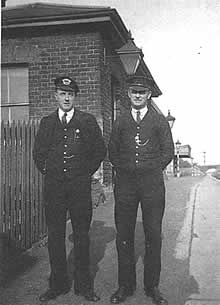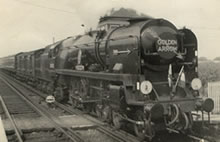 Graham Tippen writes about Marden and the Railway:
Graham Tippen writes about Marden and the Railway:
On 13th June 1842, Queen Victoria made her first ever journey by train, from Slough (then the nearest station to Windsor Castle) to Bishop’s Bridge in West London, the first terminus of the Great Western Railway before Paddington Station was built.
Just a few weeks later, on 31 st August 1842, Marden was placed firmly on the railway map when the first train steamed in, shortly after 11.00 a.m, as the South Eastern Railway (SER) opened another section of its line from London to Dover. There was no Queen Victoria present, but doubtless many local dignitaries, including Lord Cornwallis from just up the hill in Linton and ‘squire’ of the area, would have been present, with the local band, to welcome the train to the strains of ‘See the Conquering Hero comes’. Marden’s involvement and reliance on the railway for reaching the outside world has continued ever since.
On the opening day, the SER was opened as far as Headcorn, not reaching Ashford until December that year and Dover in February 1844. Originally trains from London ran via Croydon and Redhill, until in 1868 the line via Sevenoaks was opened. At the time of opening, Marden received 6 trains a day in each direction, the fastest taking almost exactly 2 hours for the 51 miles to London Bridge. For Mardonians of the early Victorian era, it must have seemed like a supersonic flight on Concorde does today (if that superb airplane were still flying). You could walk to Maidstone market in about 3 hours; go to Stilebridge and catch the mail coach that would have taken a day to get to the capital; but two hours!
Commuting was born, even if the trains had no heating, and in third class were only open trucks with benches. Mark the passage of progress by the fact that last Monday, after a snowfall that was really no more than a heavy frost, my daily journey to work also took just on 2 hours, similarly with no heating or lighting. “Plus ça change, plus c’est la même chose” as our chums the other side of Le Chunnel say!
There is a lot of Marden history that is inextricably linked to railway history, especially, as you will have read, in the Brief History section, the railway’s influence on: the population; trade; industry and agriculture. International events – war, especially – had their effect as did the several attempts to build a channel tunnel; the earliest in the 1880s. It affected culture and religion; most of Marden’s chapels were founded as a result of the presence of ‘the navigators’, many of whom were non-conformist, Welsh in particular. A lot of this influence is still with us today. Marden, since the 1970s, has become a popular commuting village, though thankfully not on the scale of Staplehurst.
I intend to expand on this section over the coming weeks and months. As an avid local historian and one with a lifelong interest in transport – almost an anorak – there is much more to tell; the Golden Arrow always running on time (except when it stopped at Marden – see photo); the appalling crash of 1969; stories from the sidings; how Marden could have been a junction on a par with Paddock Wood; railway staff etc..
Graham Tippen
Copyright© Graham Tippen 2005

